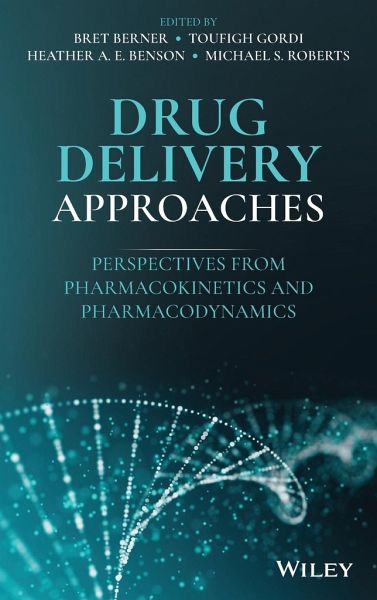
Drug Delivery Approaches
Perspectives from Pharmacokinetics and Pharmacodynamics
Herausgegeben: Berner, Bret; Gordi, Toufigh; Benson, Heather A. E.; Roberts, Michael S.
Versandkostenfrei!
Versandfertig in über 4 Wochen
214,99 €
inkl. MwSt.
Weitere Ausgaben:

PAYBACK Punkte
107 °P sammeln!
In diesem Werk werden Möglichkeiten der Wirkstoffverabreichung dargestellt, wobei physikalische und pharmakokinetische Modelle zur Erzielung der gewünschten Profile und Ansätze herangezogen werden. Nach einem Überblick über die Wirkstoffaufnahme und die physiologischen Modelle werden in den Kapiteln über die oralen Verabreichungswege (die häufigste Form der Verabreichung) die PBPK und verschiedene mögliche Darreichungsformen beschrieben. Bei der systemischen transdermalen Verabreichung ist es notwendig, die Pharmakokinetik der Formulierung und des Wirkstoffs zu verstehen, um die Formul...
In diesem Werk werden Möglichkeiten der Wirkstoffverabreichung dargestellt, wobei physikalische und pharmakokinetische Modelle zur Erzielung der gewünschten Profile und Ansätze herangezogen werden. Nach einem Überblick über die Wirkstoffaufnahme und die physiologischen Modelle werden in den Kapiteln über die oralen Verabreichungswege (die häufigste Form der Verabreichung) die PBPK und verschiedene mögliche Darreichungsformen beschrieben. Bei der systemischen transdermalen Verabreichung ist es notwendig, die Pharmakokinetik der Formulierung und des Wirkstoffs zu verstehen, um die Formulierung von der ersten Konzeption über die gesamte Entwicklung darauf auszurichten. In weiteren Kapiteln werden die biologischen und praktischen Ansätze bei der pulmonalen und mukosalen Verabreichung besprochen. Für den Fall der Notfallversorgung betrachten die Autoren die Beziehung zwischen parenteralen Infusionsprofilen und PK/PD. In den letzten Kapiteln werden aktuelle Trends dargestellt, daruntervirtuelle Experimente zur Verdeutlichung von Mechanismen sowie moderne Ansätze in der Wirkstoffverabreichung und personalisierten Medizin.
Das Werk Drug Delivery Approaches: Perspectives from Pharmacokinetics and Pharmacodynamics eignet sich nicht nur perfekt für Wissenschaftler, Forscher in der Industrie, Doktoranden und Postdoktoranden in den Bereichen der Pharmawissenschaft und Pharmatechnik, sondern verdient auch einen Platz in den Bücherregalen von Experten, die sich mit Formulierungen, Pharmakokinetik und klinischer Pharmakologie beschäftigen.
Das Werk Drug Delivery Approaches: Perspectives from Pharmacokinetics and Pharmacodynamics eignet sich nicht nur perfekt für Wissenschaftler, Forscher in der Industrie, Doktoranden und Postdoktoranden in den Bereichen der Pharmawissenschaft und Pharmatechnik, sondern verdient auch einen Platz in den Bücherregalen von Experten, die sich mit Formulierungen, Pharmakokinetik und klinischer Pharmakologie beschäftigen.




